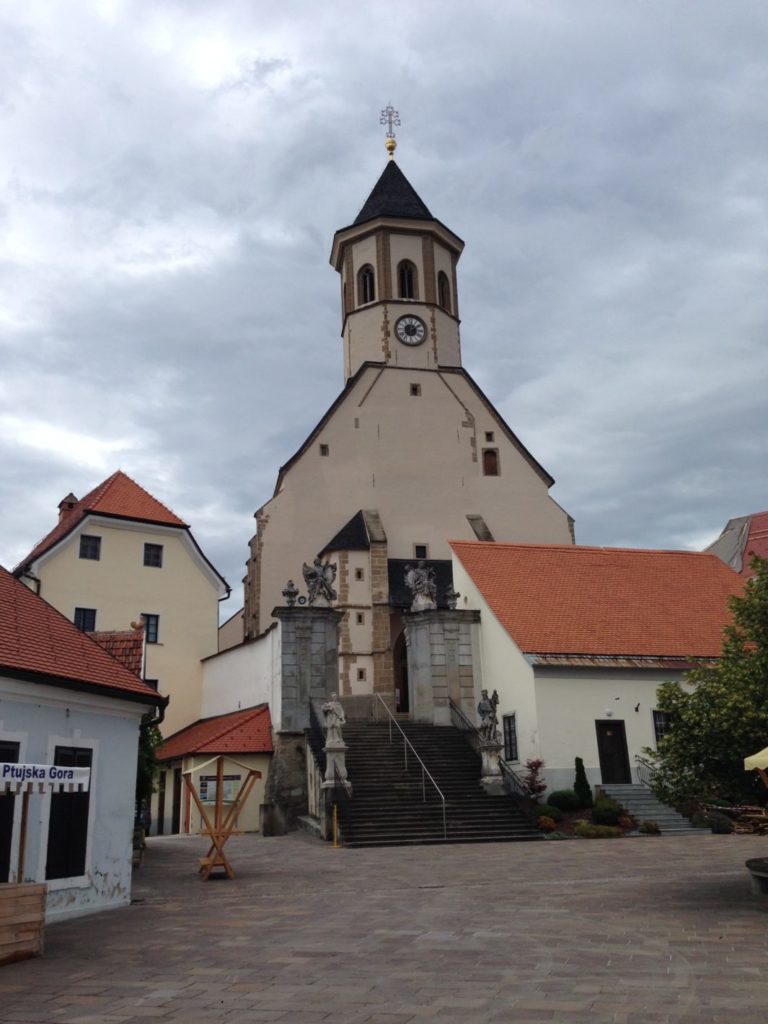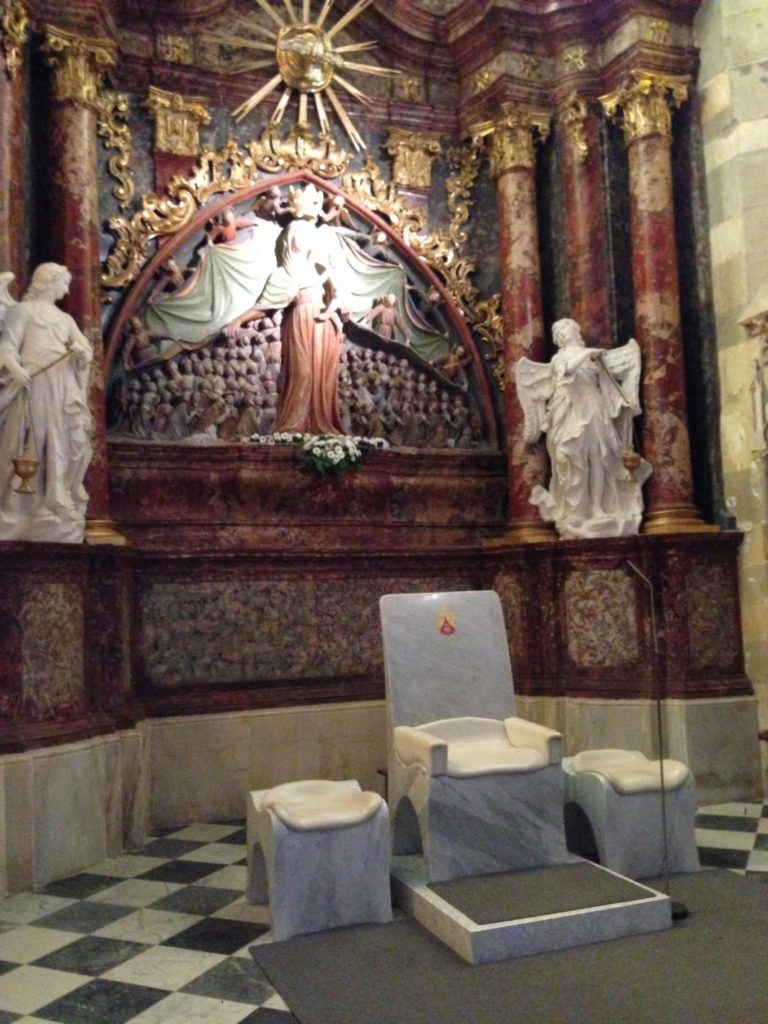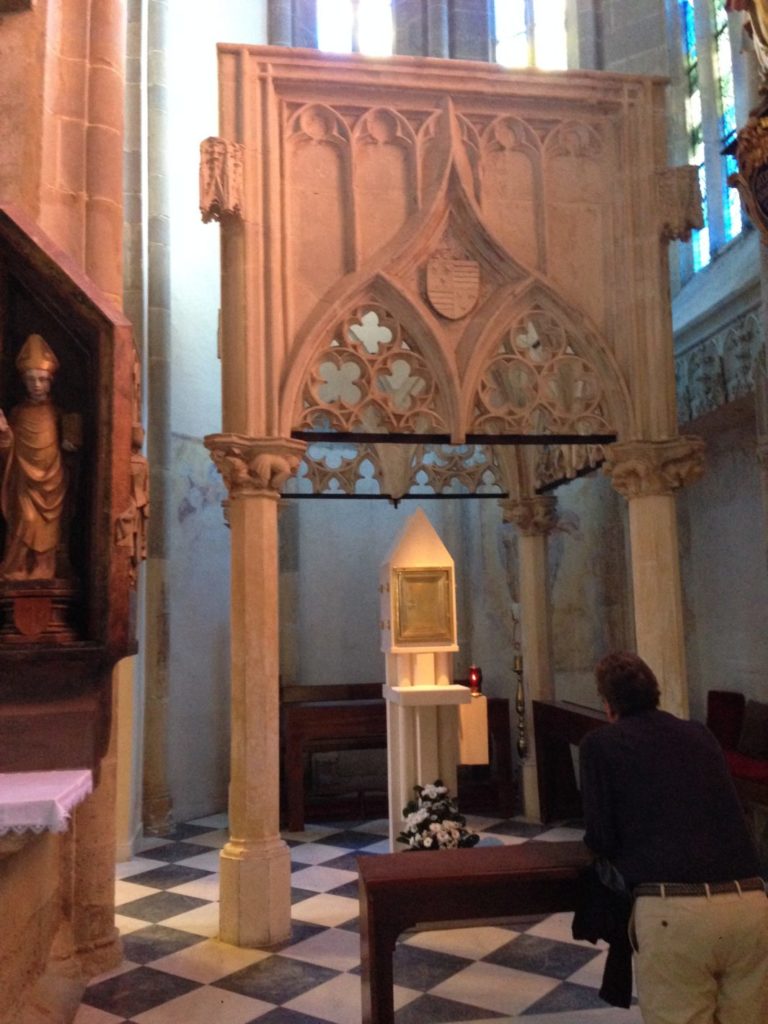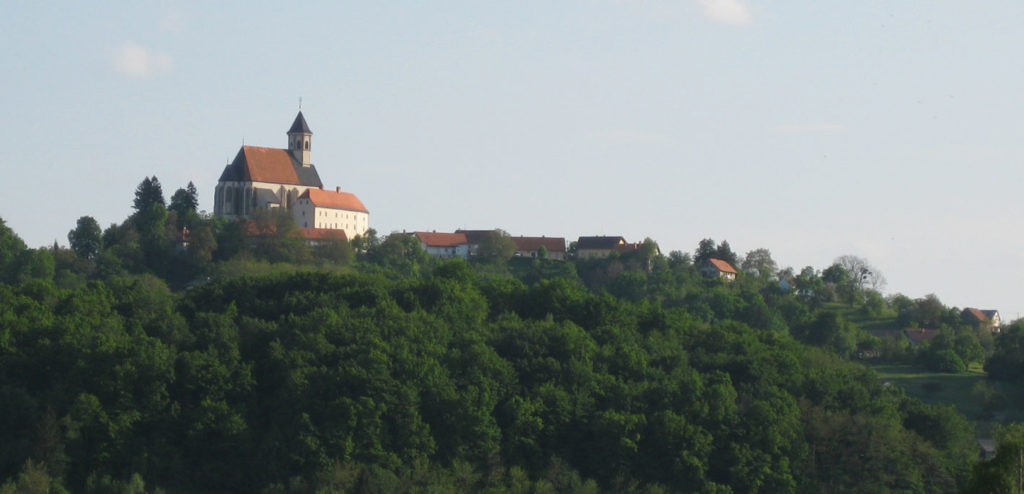Located between the valleys of northwestern Slovenia, stands the minor basilica of Our Lady of Mercy, in Ptujska Gora. A place full of history since it was erected in the 14th century by the feudal lords of the region. Since then its popularity was spreading, becoming one of the most popular places of pilgrimage in the surrounding area. Its long existence and various historical events have also tested the faith and devotion of its pilgrims. For all these reasons, the church was consecrated a basilica in 2010.
Our dear Mother has always had a place in the hearts of men and on many occasions, even in the hearts of those most distant from Christ and his Church. That is why I would like to show the wonders dedicated to Our Lady that are hidden in the heart of Europe.
A jewel of the Slovenian Gothic style
On the way between Vienna (Austria) and Zagreb (Croatia) - if not by plane - one crosses the region of Ptuj in Slovenia, where one finds Ptujska Gora, a small village located in the traditional region of Lower Styria and which has been, since ancient times, a frequent place of pilgrimages. For there, on the top of a hill and overlooking the valley, stands the church dedicated to Mary, the Virgin Protectress.

Of typical Central European appearance, it is considered a jewel of Slovenian Gothic. Its long history and the countless pilgrims who have come here to pray to the Virgin have made this place one of the lungs of the region. Since then, this place of pilgrimage has been continuing a tradition that dates back to the end of the Middle Ages, when, as the sources seem to indicate, it was erected under the patronage of the feudal lords of Ptuj. Later it seems that it would be known as "Mons Gratiarum" or Mount of Grace, until the time of the Turkish incursions, when, due to the influence of a legend, it would be known as Black Mountain.
It was not until 1615 when the place began to register a greater influx of pilgrims, coinciding with the date on which the Jesuits took over the regency of the church, as well as the house for the pilgrims built. ad hoc. But a little more than a century later, the ideas of the Enlightenment, which progressively penetrated the various courts of Europe, also reached Vienna. Empress Maria Theresa decided in 1773, following the same line as the monarchs of Spain and Portugal, to suppress the Society of Jesus. Ptujska Gora thus became a diocesan parish. Nevertheless, thanks to the efforts of its parish priests, the pilgrimages were maintained despite the adversities and restrictions imposed by Maria Theresa's successor, Emperor Joseph II, who sought to drastically reduce the presence of the Church in society by limiting the usual practices of piety of the people, such as processions, pilgrimages, patronal feasts, etc.
In 1938 the church passed to the Order of Friars Minor (Franciscans), who maintain the church to this day. They were in charge of preparing the 600th anniversary of the church in 2010, the year in which it was declared a basilica under the patronage of Mary, Mother Protector, or Our Lady of Mercy.
A baroque style with gothic elements

As a whole, the temple has a marked baroque style, with gothic architectural elements. Among these, the famous image of the Virgin with the mantle stands out. An image that the Jesuits decided to move from the portico to place over the main altar. This relief, of great beauty, made from a single block of stone, shows Our Mother with the Child in her left arm and with her mantle extended, under which she protects numerous figures: up to eighty-two people can be counted, an allegory of the constant intercession of the Virgin. Although the names of those represented by these figures are not known, experts seem to have recognized the founders of Ptujska Gora, Bernhard III. of Petau and his wife Walburga, daughter of the Counts of Cilli, the most important aristocrats during the Middle Ages in Slovenia. The altars of the Virgin of the Rosary and of St. Sigismund are also in the church, made by the same artists. In the latter chapel is the tomb of the knight Sigismund of Neuhaus, who paid for the altar dedicated to his patron saint.

Since the arrival of the Franciscans in Ptujska Gora, some novelties have been introduced. In the presbytery we can see a newly built sanctuary, very appropriate for the whole. Modern stained glass windows and the portraits of several saints have also been incorporated, such as St. Maximilian Kolbe, a Conventual Franciscan who, being a prisoner in Auschwitz, voluntarily decided to die in place of another prisoner father of a family, who would later attend his canonization. The entrance has also been decorated with reliefs of the Virgin Mary, St. John Paul II and Blessed Slomsek, Slovenian bishop beatified in 1999. Likewise, the place of the Eucharistic reservation has received a new configuration, with a beautiful tabernacle on a column, placed under a Gothic canopy.
After these brief brushstrokes, there is no doubt that this basilica should be an obligatory stop for any traveler who decides to cross or enter the former possessions of the Austrian Empire and thus discover the numerous vestiges that still exist dedicated to Our Mother. Perhaps it is also the occasion for the traveler to link in his route the different basilicas that are spread throughout the region, such as Mariazell in Austria and Marjia Bystrica in Croatia, which have become today almost national symbols. All these places, which will be dealt with in other articles, have in common the fact that they have lived moments of splendor, under the patronage of kings and great lords, but also dark moments, such as the different Turkish invasions or the restrictions imposed by the court on any form of externalization of popular piety.











